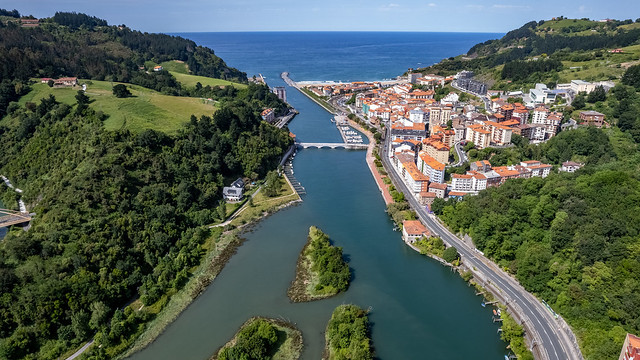Deba Bridge
The stone bridge over the Deba River is an exquisite example of civil engineering, protected as a historic landmark along the famous Way of St. James in Spain. Designed by Antonio Cortazar, the construction of the bridge was completed in 1866, connecting communities through a pedestrian-only route. On 5 July 2018, the bridge’s central pier suffered a sudden settlement, which severely damaged its two adjacent vaults, leaving the structure on the brink of total collapse. A rehabilitation project was urgently required to restore the bridge to its original aspect.
To achieve this in a 21st-century context, engineers had to recover and update many forgotten techniques of 19th-century bridge construction. This required extensive documentation and research as well as practical experimentation. Their remarkable efforts and the successful completion of the Deba Bridge restoration therefore also created new knowledge about the technical construction of stone bridges. The entire project was financed by the Provincial Council of Gipuzkoa while the bridge is jointly owned and operated by the Deba and Mutriku local governments.
During an inspection after the settlement, it was discovered that the wooden piles supporting the pillar were progressively weakened by marine woodworm, leading to a reduction in their load-bearing capacity and risking their eventual collapse. After evaluating various options, engineers decided to install a gantry falsework over the structure, extending between the two adjacent piers from which the damaged and deformed vaulted arches could hang from above. This falsework also played a vital role in maintaining pedestrian use of the bridge throughout construction.
Once stability was ensured, work began on the detailed rehabilitation design, which required historical research and interdisciplinary technical cooperation. After considering different alternatives, engineers decided to underpin the collapsed central pier, carefully dismantle the damaged vaults, and rebuild them to their original geometry while reusing as much of the original stone as possible. Out of the 1,400 ashlars used in the reconstruction, 1,250 were recovered from the damaged bridge.
To educate society about the value of heritage structures in general and masonry bridges in particular, a project information booth was opened in the vicinity of the bridge throughout the works and several talks and guided tours were offered.
The challenges of working in a marine environment subject to tidal changes, the technical complexity together with the cultural significance of the bridge set this project apart.
“This is a marvellous, high-quality project on a bridge with great heritage significance. The effort to reconstruct the Deba Bridge has been huge. At a technical level, this project is truly remarkable and is especially important thanks to the transfer of knowledge on the applied techniques. The environmental impact was minimal with special efforts made to not cause any pollution to the surrounding landscape Also notable is the care paid to the local community, in informing them about the restoration and keeping the bridge in operation throughout the intervention”, stated the Awards’ Jury.
“Such an approach, which helps to minimise the need for interventions, could help in safeguarding other bridges in Europe in the future”, the Jury concluded.
More information
Contact: Ainara Iroz । airoz@gipuzkoa.eus । www.gipuzkoa.eus/en/web/kultura/ondarea



